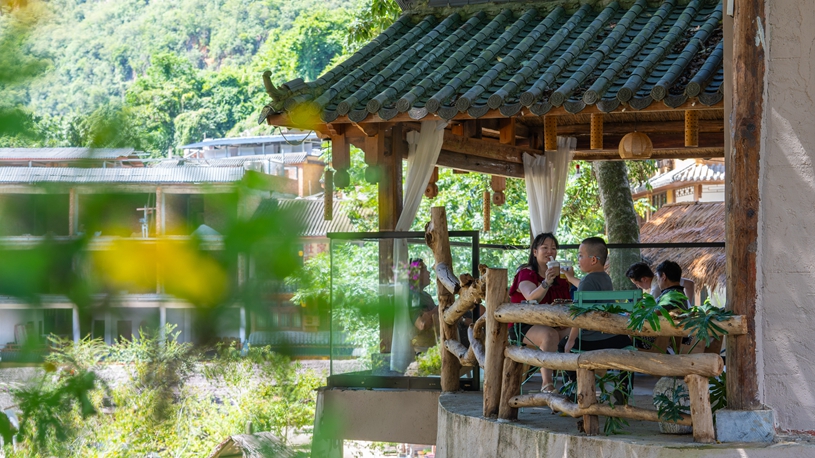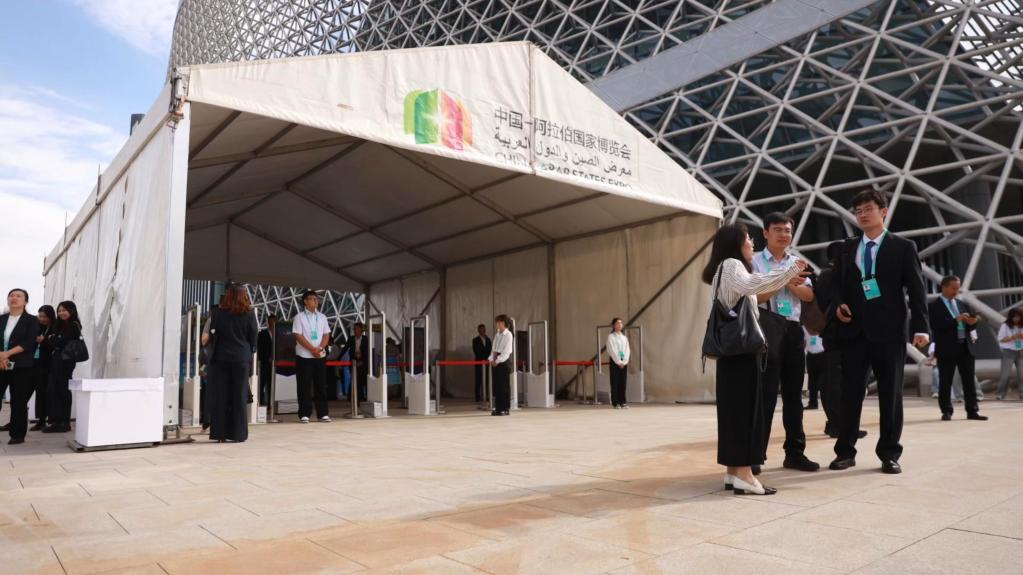AI helps protect endangered Atlantic salmon in Arctic Norway
Source: Xinhua
Editor: huaxia
2025-09-02 18:59:30
An AI sorting system was introduced in 2021 to tackle the invasion of pink salmon that threatens wild Atlantic salmon on multiple fronts.
SKALLELV, Norway, Sept. 2 (Xinhua) -- On a late summer morning in Skallelv, a small village inside the Arctic Circle, the Skallelv River glitters under the pale sun. Beneath the icy water flowing quietly toward the Barents Sea, endangered wild Atlantic salmon struggle upstream to reach one of their breeding grounds.
Each year from June to September, the salmon undertake this arduous migration, overcoming natural obstacles to spawn. But in recent years, new risks have compounded their struggle. Rising water temperatures caused by climate change, environmental changes linked to fish farming, and most critically, the rapid spread of invasive pink salmon have mounted pressure on the native species.
The invasive pink salmon threatens wild Atlantic salmon on multiple fronts, Vegard Kjenner, chief technology officer of Huawei Norway, told Xinhua. It takes over prime spawning grounds, pollutes rivers and spreads disease through its carcasses, and competes aggressively for limited food, he explained.
To tackle the invasion, an artificial intelligence (AI) sorting system was introduced in the Skallelv River in 2021. The project, developed through cooperation between Chinese tech giant Huawei and Norwegian partners, is part of Huawei's global TECH4ALL program, launched in 2019 to promote inclusivity and sustainability through innovative technology.
"After we were given funding from TECH4ALL to start this project, we searched across Norway for partners," Kjenner said. "We found Simula, one of the top AI institutes in Norway, and TrollSystems, which has extensive experience in the fish farming industry."
In addition, with the support of local fishing organizations, which provided thousands of images of different fish species, including Atlantic salmon, Arctic char, and pink salmon, they trained the AI algorithms to recognize and sort fish in real-time.
The system functions as a non-intrusive river barrier that guides fish into a monitored passage. Underwater cameras capture real-time images of groups of passing fish, which AI algorithms identify and sort within milliseconds. Native Atlantic salmon are then allowed upstream to complete their spawning cycle, while invasive pink salmon are diverted into a containment cage for removal.
With an accuracy rate of 99.997 percent, the system has, by this summer, intercepted more than 4,000 pink salmon in the Skallelv River alone, effectively reducing the threat to native species.
For Bror Bonde, the lead river warden who has overseen the Skallelv for seven years, the difference is significant. "With manual sorting, you had to physically handle every native spawner. That was both labor-intensive and harmful to the fish," he said.
With the AI system, fish can pass through unhindered. He said, "It's better for the Atlantic salmon to self-regulate all the environmental stressors and to adapt to the freshwater after returning from the sea."
The project has since developed into a pilot model applied in multiple rivers, winning support from Norway's Ministry of Climate and Environment.
Looking ahead, Kjenner said that the next large-scale pink salmon migration is expected in 2027, and he hopes the system could be deployed widely by then.
Beyond sorting pink salmon, the technology has broader potential. "The algorithm we've developed can be trained to recognize any fish species, as long as there are enough pictures and materials," Kjenner said. "In Norway, we also face challenges with escaped farmed salmon, which we don't want entering the upper rivers. We are now training the AI to detect and separate farmed salmon from wild Atlantic salmon."
From the Arctic rivers to tropical rainforests, technology is increasingly becoming a vital tool in tackling environmental challenges. In an active role participating in such biodiversity protection, Huawei's TECH4ALL program has been applied in diverse environments worldwide, from wetlands to wildlife reserves.
"It is only our imagination that sets the limits for where we can use technology," Kjenner said. "This project is just a concrete case showing that we are doing something good - and it works. I'm sure there are hundreds of other cases around the world where we can use technology. And it is fun." Enditem












Comments